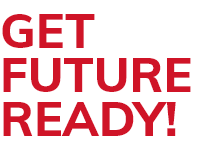BRIDGING GAP BETWEEN MARKET AND ACADEMIA BY NAZUK ENDLAY
India, the nation of growth is considered to be one of the emerging superpowers of the world with approximately 1.5 million engineers trained for the job market every year. With the growing economy, India is also witnessing the growth of educational sector. However, Indian industry is still looking for reforms for betterment of job-readiness of the graduates.
There is an urgent need that the industry and academia come together and address some of the underlying challenges. Though educational institutions are preparing millions of students for the corporate requirements with new and innovative internships and training programs yet there lies a question over the existent gap between the corporate requirements and the academia.
The intersecting requirements and jointly inter-reliant relationship requires identifying means of further improvement in academia-market partnerships.
Major Points of Concern:
Syllabus:
Engineering courses in India are still tuned with the traditional way of teaching. Although, new teaching methods and programs are improving things at the grass-roots level, but further reforms are required to improve the employability of candidates.
Faculty Requirements:
The traditional way of teaching engineering doesn’t let teachers to evolve. It is true that basics are important, but in this fast-pace world it is important to gain some pragmatic experience before entering the job market. Teachers need to impart this side of academia and for that, they will require training beforehand to improve the overall situation.
Improvement in Innovation and Research:
Our students think more about the result rather than fun learning. They are taught technologies that are not relevant in the 21st century which makes engineering boring. They are high on potential and talent but, lack the “out-of-the-box” thinking attitude with no inclination towards innovation and research. The things are improving on this horizon with Government of India and corporate houses providing funding for research and ensuring a brighter future for the scientists in India.
Skill Based Learning:
Education in India is still majorly theory oriented. We have observed some breakthroughs in Indian engineering academia with several competitions such as go-karting, robotics etc. But, students are still not aware of on how to apply theory in day-to-day life. They lack skills to get employed.
Soft Skills:
One the major problem arising is the continual ignorance of soft skills which are major factor when it comes to corporate employability. Students focus only on the result of placement; they spend all their time focusing on subject curriculum.
Panacea:
Aligning Curriculum with Industry:
The imperative need to re-structure the existent educational system is to address the varied needs of the dynamic industry. The curriculum needs to be regularly revised and developed in accordance with the market needs.
Shift to Practical Learning :
The classroom methodology and theory inclined approach needs to be reoriented with making the entire approach more dynamic with the help of practical hands-on learning.
Workplace Exposure :
Need to increase exposure of students to industries and market by simultaneous practical implementation through internships, live projects and corporate interactions.
Channel Industry Challenges:
Channeling some real-time industry challenges and problems to students as add-on to the curriculum; can help students to crack interviews and big jobs in the future.
Focus on Soft Skills :
Besides learning of core or technical knowledge, academia should also focus on the overall development of the student including soft and behavioral skills such as leadership capabilities, attitude, professional communication and interpersonal skills.
Its high time now for us to recalibrate the Indian education system with modern methods of teaching and training. Collaboration of industry and academia will play an important part in tapping the gap between what is given to what is actually needed.


















